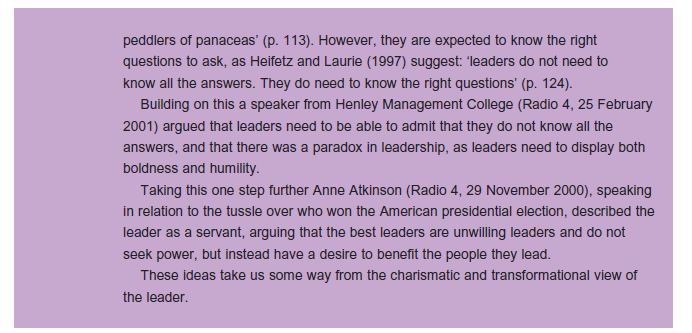We Really Need Heroes?
Leadership can be understand by studying the concept of transformational leadership, where the role of a leader is studied at the strategic level. Transformational leadership uses the trait approach where extraordinary as well as exceptional leaders display ideal behavior.
In an organization, a leader is given the title of a hero or a savior. It is assumed that they will have the solution to every problem and they know what should be the course of action in case of an emergency. Leaders invoke in the team members a sense of commitment in order to achieve the organizational goals on time, which is good from the point of the organization. Leaders help in developing the confidence of the team members so that they can achieve more than they could initially. Leaders keep the members in the loop about the present situation. Mangers and leaders are differentiated. In 1985, Bennis & Nanus suggested that leaders find the path whereas management is concerned with following that path. Leadership is doing the right things whereas all the management glory is about getting and doing things the right way; leaders establish a direction while managers plan & provide a budget.

Factors such as globalization and emerging technology affect all the levels of the organization. Increasing the power of teamwork and importance on knowledge workers will results in employees reacting less to be a great and big transformational leader. Understanding the many characteristics and styles of the leaders along with that of the organization has become a thing of the past. The focus is now on post-hero leadership model. Also, female leadership styles are given importance. Integrity, humility, selection of good people are the preferred leadership qualities in today’s date.

The changes in the leadership role is presented by the table, which is demonstrated below:

In 1997, Heifetz and Laurie gave six principles of post-heroic leadership. Leadership is all about learning and aligning the members with the vision of the organization. With changes being adapted in the organization, it is no longer only the responsibility of the leader to solve problems. All the employees are encouraged to take active participation and be proactive in the process of problem-solving. Leaders need to build this self-confidence in the employees.
Leaders, as well as the team members have a lot to learn. Leaders have to learn to trust the employees, develop new skills and take a different perspective. On the other hand, employees or team members have to learn to take responsibility.
In 2003, Kets de Vries made a point that post-heroic leadership system will always be prevalent. The changes which are introduced can make people anxious and therefore, heroic leaders can come to the rescue. But, it can prove to be disappointment as the expectation list associated with heroic leaders is endless. In conclusion, it can be said that there is no best way of leadership. Different leadership styles are required during different situations.
Links of Previous Main Topic:-
- Strategic aspects of performance
- Organisational performance
- Individual performance management
- Team performance
- Introduction leadership and motivation
- Leadership and management
- What are the traits of leaders and effective leaders
- What is the best way to lead leadership styles and behaviours
- Do leaders need different styles for different situations
Links of Next HR Management Topics:-






